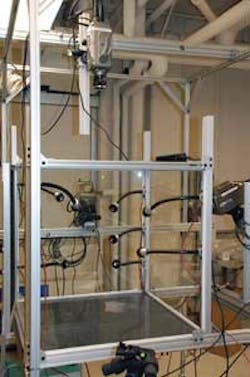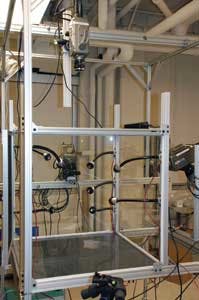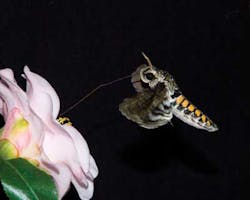High-speed cameras capture moth motion
Tyson Hedrick, an assistant professor in the Department of Biology at the University of North Carolina at Chapel Hill (Chapel Hill, NC, USA; www.unc.edu) is using three high-speed cameras to determine what makes hawk moths so skilled at flying. Hedrick studies animal biomechanics and has been examining the wing-flapping patterns of the hawk moth to better understand the mechanics, aerodynamics, and evolution of animal flight.
In studying these fast-flying animals, Hedrick needed to use stereo cameras to capture images of the moths flying at speeds up to 30 mph while flapping their wing tips at 20 mph even when they are hovering.
Ultimately, Hedrick decided to deploy three Phantom cameras from Vision Research (Wayne, NJ, USA). The imaging system allows Hedrick to film the hawk moth at the 1000 frames/sec he needed to capture the moth's wing movements. To ensure that no important shot was missed, Hedrick saved his footage using Vision Research's CineMag interface to capture images from the camera's memory to a nonvolatile storage device in a matter of seconds.
Hedrick knew the moths would only perform under the right lighting conditions and used infrared (IR) lighting, which was imperceptible to the insects.
After the cameras were purchased, Vision Research provided Hedrick with spectral response curves for the cameras, enabling him to build a lighting system that was able to help capture the motion of the moth. "With the spectral response curves, we could develop the best lighting setup for the cameras to image the hawk moth. This ensured that we could obtain the best possible footage and analysis of the moth's wing-flapping patterns," he says.
Hedrick takes the raw data acquired from the Phantom cameras to analyze the wing-flapping patterns. The data allow him to measure the pitch, yaw, and roll of the moth's flapping pattern and understand its flight. Hedrick believes that his research may eventually lead to more efficient manmade micro-sized flying devices (also known as micro aerial vehicles).


